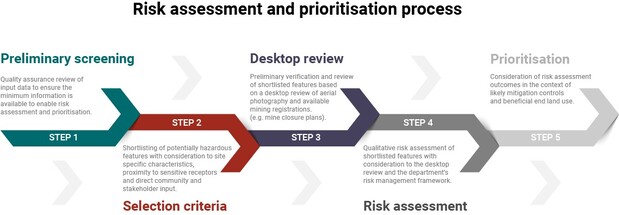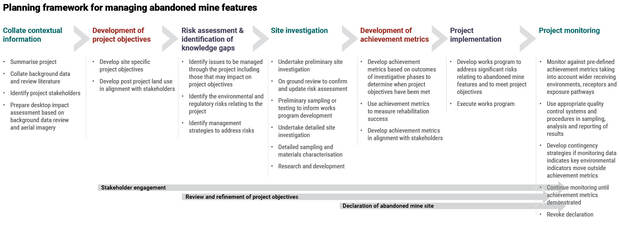The Abandoned Mines Program implements projects to rehabilitate abandoned mines in Western Australia using funds generated through the Mining Rehabilitation Fund (MRF). Money in the principal fund can be used to rehabilitate abandoned mine sites where tenement holders, who have contributed to the fund, fail to meet their rehabilitation obligations. Interest generated from the fund can be used to rehabilitate historically abandoned mine sites that existed prior to the introduction of the Mining Rehabilitation Fund Act 2012 (MRF Act).
The Abandoned Mines Program implements projects using principal and interest funds and, where available, Unconditional Performance Bonds called in by the Minister when environmental conditions have not been met. Further information on each of these projects is provided below.
Risk assessment and prioritisation
New projects under the Abandoned Mines Program are prioritised following a risk assessment and prioritisation process that has been developed in line with the Abandoned Mines Policy. The process draws predominantly on survey data collected by Geological Survey of Western Australia and incorporates community and stakeholder nominated sites for consideration.
This process aims to systematically identify and characterise hazardous sites, assess the associated safety and/or environmental risks and prioritise works with consideration to potential risk mitigation measures and beneficial end land use. The Abandoned Mines Program is seeking community input to identify potential high-risk abandoned mine features to support this process.
If you would like further information on the risk assessment and prioritisation process, a paper presented by the department at Mine Closure 2019 is available for download from the conference website.
Project implementation framework
A risk-based approach is applied when planning the implementation of Abandoned Mines Program projects. The planning framework is an iterative process, which is initiated with the use of contextual site data that assists in the development of project-specific, outcome-based objectives and achievement metrics. The framework supports decision making, and helps develop appropriate responses to emerging issues through investigation, monitoring and adapting to environmental, economic and social changes.
The framework highlights the role of project stakeholders and the importance of stakeholder engagement throughout all stages of a project.
Procurement of services
The Abandoned Mines Program procures goods and services for project work in line with State government procurement policies and guidelines. Please refer to the Department of Finance’s website for further information on procurement practices.
If you would like to register your company’s interest in providing goods or services to the Abandoned Mines Program, please complete the form and email to AbandonedMines@dmirs.wa.gov.au. Your company will be added to a register which is referred to when requirements for specific services arise.
-
 Ashmore Seppelt
Project to address environmental and safety concerns at the Ashmore, Seppelt 1 and Seppelt 2 sites.
Ashmore Seppelt
Project to address environmental and safety concerns at the Ashmore, Seppelt 1 and Seppelt 2 sites.
-
 Bulong
Project to address environmental concerns at the former Bulong Nickel tailings storage facility site.
Bulong
Project to address environmental concerns at the former Bulong Nickel tailings storage facility site.
-
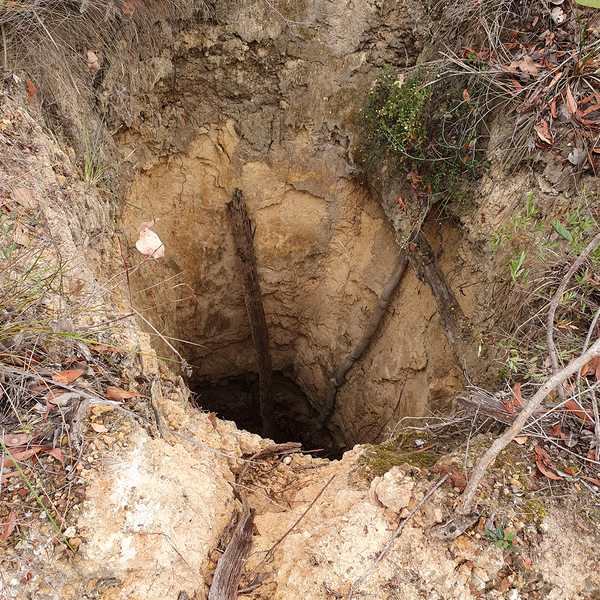 Donnybrook shafts
Project to address safety risks associated with old mine workings near Donnybrook.
Donnybrook shafts
Project to address safety risks associated with old mine workings near Donnybrook.
-
 Ellendale
Project to address environmental and safety concerns at the original Ellendale Diamond Mine.
Ellendale
Project to address environmental and safety concerns at the original Ellendale Diamond Mine.
-
 Elverdton
Project to address environmental and safety concerns at the historical Elverdton mine.
Elverdton
Project to address environmental and safety concerns at the historical Elverdton mine.
-
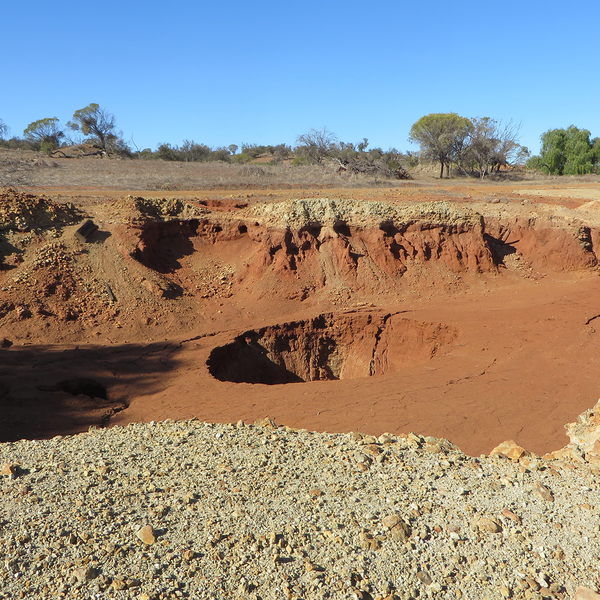 Wheal Ellen
Project to address safety risks associated with historical mine workings near Northampton.
Wheal Ellen
Project to address safety risks associated with historical mine workings near Northampton.
-
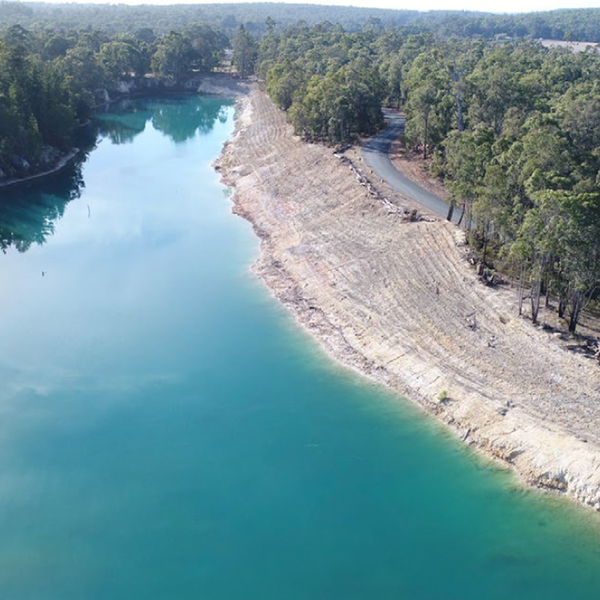 Completed projects
Projects completed under the Abandoned Mines Program
Completed projects
Projects completed under the Abandoned Mines Program
For more information on how the Western Australian State Government is addressing the risks associated with abandoned mine features through management and rehabilitation view Abandoned Mines Program.
Contact
Abandoned Mines Team
Email: AbandonedMines@dmirs.wa.gov.au
Media enquiries
Email: media@dmirs.wa.gov.au
Phone: +61 8 9222 6102

